
CHANNELLOCK has a rich history in America going all the way back to 1886. Today, Channellock is one of a limited number of manufacturer’s that make just about all their tools right here in the USA. At their facilities in Meadville, PA, Channellock produces over 125 different pliers, and they are constantly developing new, innovative designs.
They recently had a small group of publishers out to their factory, and we had the privilege to see how a steel billet is transformed into a high-quality pair of pliers. We got a look at the different stages of production for various tools, and Channellock even let us take pictures. I’m a huge fan of Channellock, and I’m excited to share a tour of their factory with all of you.
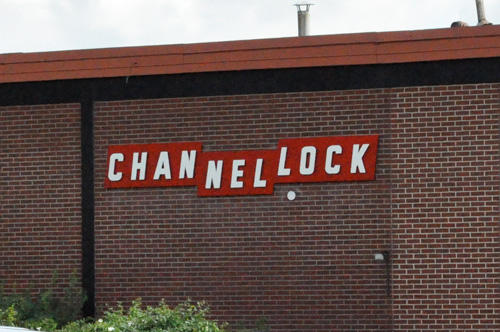
Every pair of Channellock pliers starts as a steel billet. The steel is high-carbon, 1080 (10-alloy, 80-carbon) produced right here in the United States.
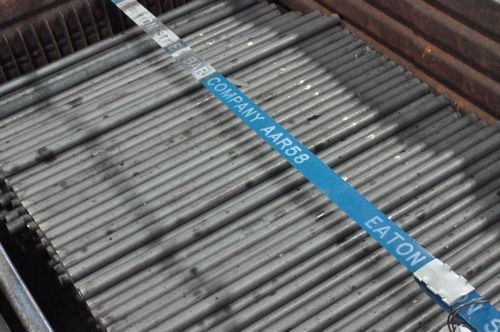
The steel is heated, and die-forgers hammer the steel into the different components.
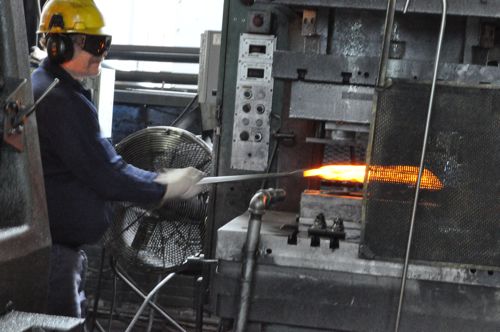

Here’s a look at the leftovers after the components are separated.
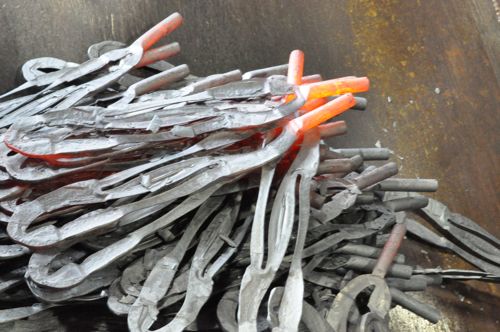
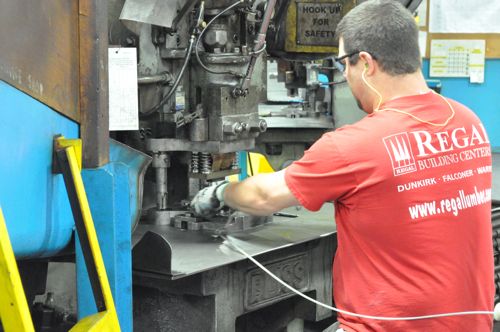

Here’s a look at some T&G pliers before and after the grooves are cut.
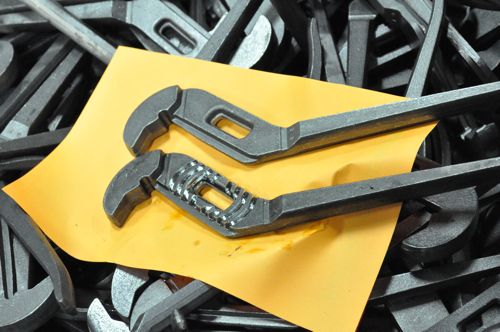
This is just a portion of the different components waiting to be assembled.
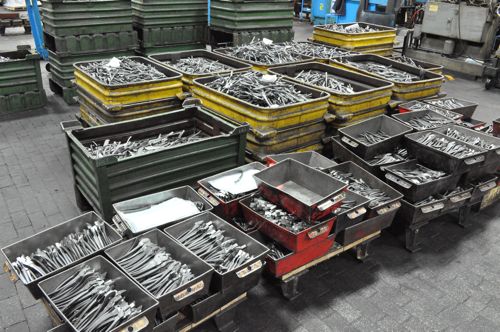
After the fastener is set, these cutting pliers are ground smooth and then polished. Next, they’ll go to be sharpened.
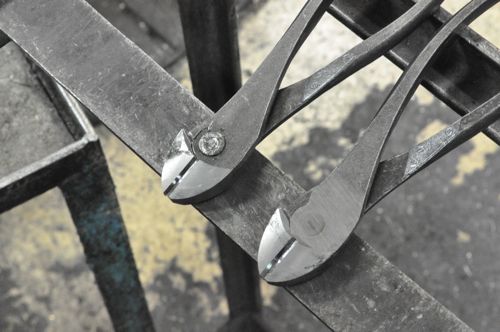
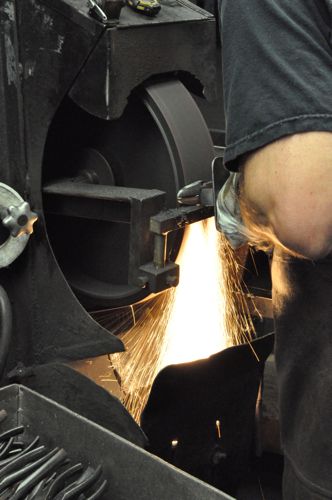
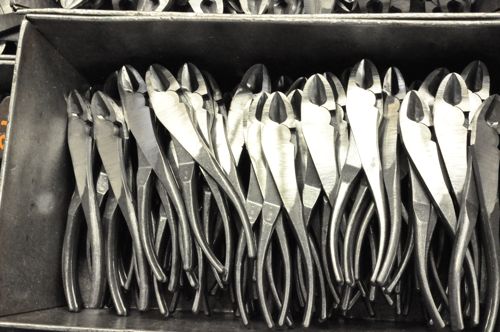
Channellock performs heat treatment to make their tools strong but not brittle. Here’s a look at a rack of linemen’s about go into the oven.
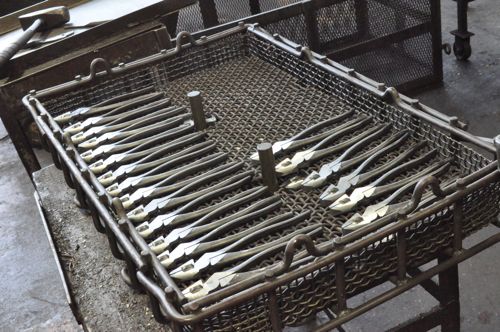
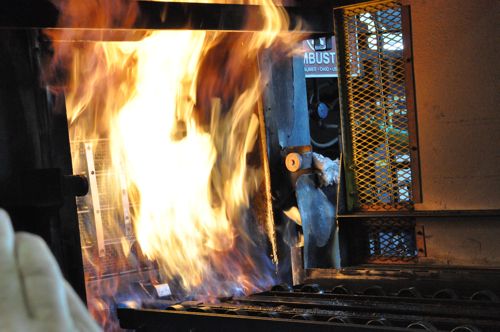
Channellock pliers cut and grip so well because they use RF hardening (pictured) and laser hardening techniques on the jaws and teeth for improved durability. Competitors perform similar techniques. However, Channellock is far more precise and that results in superior product.
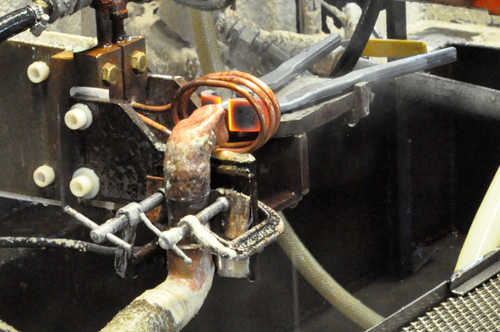

Every pair of pliers undergoes quality checks to ensure sharp cutters and smooth motion through the pivot.
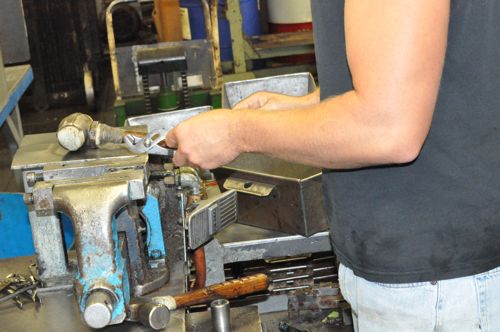
In this phase the pliers are cleaned and given a protective coating.
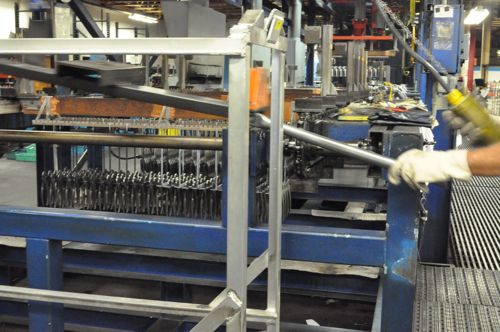
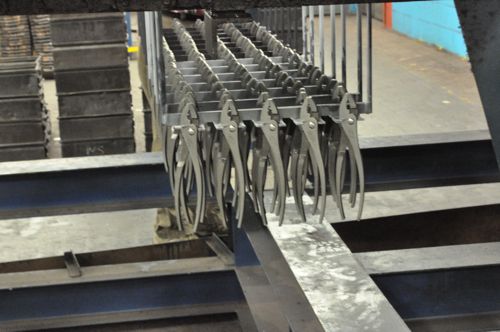
Next the handles are dipped into liquid PVC, and the coating is baked solid.
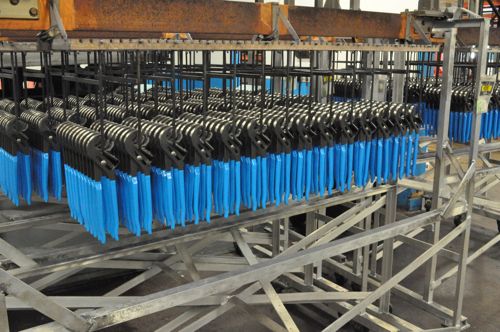
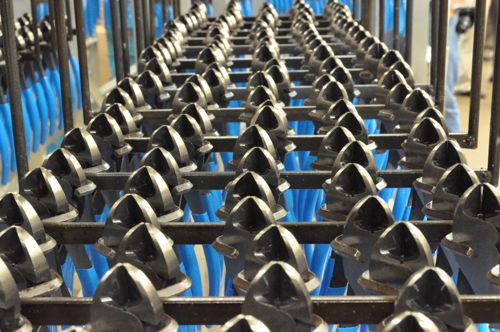
Even the Code Blue handles are made locally.
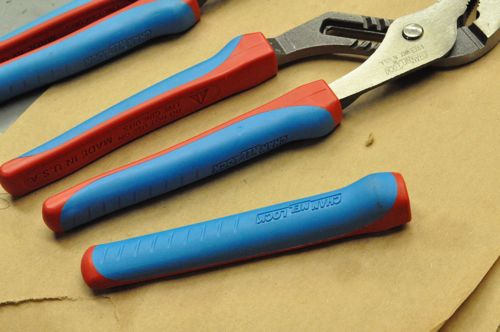
Lastly, everything is packaged and boxed up for delivery. Can you believe they manufacture thousands of pliers a day?!
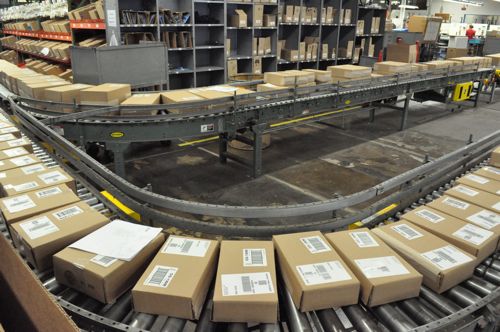







Very cool. As an engineer, I’ve always been a fan of the How It’s Made-type show. My grandpa’s channellocks are now my dad’s most reliable pliars. Great products.
How It’s Made is the first thing I thought of too. Great show. Factory tours are fun for almost anything
wow i just cannot wrap my mind around the need for 10K pliers a day. It’s a good thing though economically speaking of course.
When I first heard the 10K number I didn’t get it either. Where are all these pliers going especially if they are of such high quality? Are they replacing lesser quality ones or are they eventually wearing out? A significant portion of my large pliers are Channellock, I don’t foresee them needing replacement except for maybe some with cutting surfaces eventually.
Big box stores like HD and Lowes are some of their biggest purchasers, and I’m sure keeping their shelves stocked makes up a significant portion of that number. Other than that, I’m not sure.
I work at Channellock, I was also amazed at the number of pliers being made and sold. Channellock pliers are made to last. SO where do they all go I asked that myself. You figure if You are a tradesman working up on a electric pole and you drop you lineman pliers more than likely you are not going to look for them. also as a new person starts a job they will go out and buy new tools. It is amazing first to see all the steps it takes to make channellocks.
Two colors are a necessity to remember; silver and blue. If duct tape can’t fix it your channel locks will.
I’m surprised by how much of this still seems to be done by hand. I think I expected a bit more automation.
At the big box stores, it looks like their main competitors at Home Depot are Klein and Irwin. Lowe’s has a lot of Crescent, Knipex, and Kobalt (their store brand now, right?)
From a consumer standpoint, it’s really hard for me to tell the difference between these brands when I’m standing in the tool aisle at a store.
Hey Reuben,
Great comment. There is some automation, but still a lot of hands touch every pair of pliers. Even some of the sharpening is done by hand with a file.
Demonstrating why Channellock makes a better pair of pliers is a huge challenge for them. A lot of the time, DIYers and homeowners will just go with what’s cheapest, not caring about longevity. Also, competitors use similar techniques on their pliers so it’s touch to separate the wheat from the chaff. To prove the point, Channellock had several competitors cutting pliers (still in their packaging) and we tested them out side-by-side. The difference was obvious, even from pro brands like Knippex and Klein. I’m convinced Channellock makes the best product.
I am a devoted Channellock customer, both because they are quality products and made right here in PA. It doesn’t seem like there would be demand for 10,000 pliers a day, but the scope of the world’s consumption really surprises me sometimes.
After reading this article the related content section had your previous article where you expressed concern that Channellock wasn’t innovating their products as much as competitors – did you get any insight into future products while you were there?
Hey Haus,
We talked some about the patent process, and we saw the area dedicated to their engineers. We also talked about a few new products. I’ll add more details when the press materials arrive in the next few days.
Ooo, new toys : )
I’m torn when companies like this make new products. They have an excellent base product that doesn’t need improving. However, as an engineer I like to have a job making new stuff, and new technology is really cool. I guess new stuff is good, as long as I can still buy the tried-and-true older products without the flashing LED’s, and trinket accessories.
-J
Channellock is definitely “staying true” to what works. Their tongue & groove pliers haven’t changed that much over the last couple decades, and that’s because the current design is so reliable. Also, Channellock didn’t get into the Irwin-quick-adjust type plier for that same reason. I haven’t seen any LED’s yet 🙂
Re:To prove the point, Channellock had several competitors cutting pliers (still in their packaging) and we tested them out side-by-side. The difference was obvious, even from pro brands like Knippex and Klein. I’m convinced Channellock makes the best product.
I would love to know which models you compared and what was the obvious differences that made Channellocks better
Hi PutnamEco,
They had similar sized cutting pliers and linemen’s that we used to cut through a couple different gauge wires. I don’t know the model numbers but Knippex, Klein, Craftsman, Kobalt and a couple other brands were tested. For every comparison, the Channellock made the cut without nearly as much force.
My modified 420’s are the business. They already make a pair of specialty tool for the fire service. I wish they’d go ahead and make a set of 420’s that are already set up for through-the-lock entry.
Here are mine:
http://img.photobucket.com/albums/v604/footrat/c9c71750.jpg
Very nice! I’ll make sure Channellock see’s you pic and comment.
There’s something to be said for modifying and making your own tools the way you need them for a particular occupation. However, not everyone in the fire service has the ability or fortitude to take a perfectly good set of Channellocks, cut the grips off, heat them with a torch, bend them, and grind/file them to perfectly fit the insides of lock mechanisms. There are already key tools that do what the modified ends of my 420’s do, but they’re small and easily lost. It may be a niche market, but I figure that their models 87, 88, and 89 are already niche tools. Those three tools have a multi-tool aspect to them that is completely unnecessary. I don’t want a tool that does 6 things. I want one tool designed for one purpose. If I want cable cutters, I’ve got a pair of Kleins that are fantastic. If I want side cutters, I don’t want a spanner wrench and a gas shutoff key attached to them, getting in the way. It’s just too much. The ends of the modified 420 handles aren’t in the way, and either can be used in its appropriate lock type without interference from another part of the tool. Channellock could EASILY forge a tool already in that shape, do some final shaping, then heat treat the ends for better longevity. Mine are definitely no longer heat treated, so I’d spring for a tool that was forged all the way through, and still heat treated where the wear and stresses are applied.
Cool Pictures! I don’t own any channel locks (yet!), but they’re on my list now. Thanks.
Get the basic set at least. It’ll become your go-to plier in no time.
That must have been a fun tour! I have one set of standard Channellock pliers (needle nose, slip joint, cutters and their namesake tongue & groove pliers) and they’re all excellent. My only gripe is that I keep them in the garage, and I need a set in the basement too!
I smile knowing that they’re still made in the USA unlike most Crescent and other brand tools. I’d rather have a 40-year old made in the USA tool because I know the metal is higher quality and it was manufactured to higher tolerances.
– J
You’re not the only one taking comfort that Channellock is made in the USA from USA high-carbon steel.
You mentioned the gimmicks like LED lights, quick adjust to name two. Well I think that Channellock are great and I have several but I thought that Irwin GrooveLock’s easy adjust was neat and thought about getting some. I played with them in the store but haven’t parted with the $$$ to get any yet. Are they not reliable? I’d like to know before I find out by spending my $$$.
2Lguy
Word (from Channellock) is that the grooves aren’t as reliable. I have a few pairs and they haven’t broken but the quick adjust isn’t nearly as smooth as it was originally. I tend to grab my Channellocks more often than Irwin’s.
I’ve been hearing Channellock commercials on the radio this last week. It may be that I just never noticed them before but I think they are new. I was surprised at the coincidence, especially because I don’t live anywhere near PA (I live down in Texas).
Very cool article! I have one pair of Channellock pliers that were passed on to me from my dad. They’ve seen quite a bit of use over the years but still work like a champ. I just bought my first house and I’m slowly filling my tool box as I take on projects that require different tools. It’s good to know that Channellock still makes their tools here in the US, I’ll definitely keep that in mind when I’m buying new tools.
One of the greats is still made in the US! Keep up the work, Channellock! I’ll keep buying and gifting your great products.
i keep wanting to take the hit on getting at least one pair…. USA made definitely only encourages that desire!
Do you have an outlet store open to the public at your Meadville PA plant? My husband is a truck driver that passes by there and has wanted to stop if you do.
I worked for Channellock in 1969 and worked in the heat treatment dept. I was the guy running the
RF machine and then went to inspector and running the sandblaster. I have worked as a carpenter/handyman for 39 years in the Dallas Tx area and have tried other brands of pliers but none have ever been as good as Channellock tools. I own about 6 pair and will never buy another brand.
Absolutely love my Channellock tools especially the fact that they are made in Meadville where some of my greatest childhood memories are from like The Crawford County Fair. I am a glazier and one item I’d like to see are glass pliers. Both dropjaw and running pliers would be nice.